
This document provides a guide to the process of "hand-scanning" -- examining small cutouts from SDSS scans centered on supernova candidates. For more background, see
Over the course of a good, clear night, the SDSS telescope will scan a long, thin region in the sky. Actually, it scans 6 narrow strips, one for each of the columns in the SDSS photometric camera:

The data collected during this long, continuous observation is called a run. The very first run made back in 1997 was run 1, and the run number has been incremented with each subsequent run ever since. In September, 2005, the run numbers were up around 5600.
The data collected on a given night may be processed several times; for example, one might process the data with several different versions of the PSF-fitting software. Each time the data is reduced, the results are stored with a different rerun value: these values may jump from one integer to another (from rerun 1 to rerun 5, for example).
As the telescope moves, stars drift across the array of CCDs. Using the above figure's orientation, a given region of the sky will drift vertically downward through a single column of the camera, encountering (in order) the r', i', u', z', g' filters. During ordinary opertions, an object takes 55 seconds to drift across each chip; thus, the exposure time is 55 seconds in each passband. As shown in The Sloan Digital Sky Survey: Early Data Release (Stoughton et al., AJ 123, 485, 2002), the limiting magnitude for point sources is very roughly 22 in g' and r', 21 in i'.
Since each chip is 2048 columns wide, with a plate scale of about 0.40 arcseconds per pixel, each column subtends about 13.5 arcminutes = 811 arcseconds on the sky. You can find all the details in The Sloan Digital Sky Survey: Technical Summary (York et al., AJ 120, 1579, 2000).
A long run will yield 6 long strips of data, one along each of the columns. There will a small gap between the strip observed by each column, due to the gaps between the columns of the camera, so objects will appear in only a single column per run. The typical procedure is for one person to examine the candidates found in a single camera column during a single run. Under ordinary circumstances, there might be 300-1000 candidates, which might take 2-7 hours to check.
To start, set your browser to the Handscan Initialization Page
http://sdssdp47.fnal.gov/sdsssn_data/handscan/initial_manual_scan.phpwhich should look something like this:

Prepare by choosing the desired properties on this form:

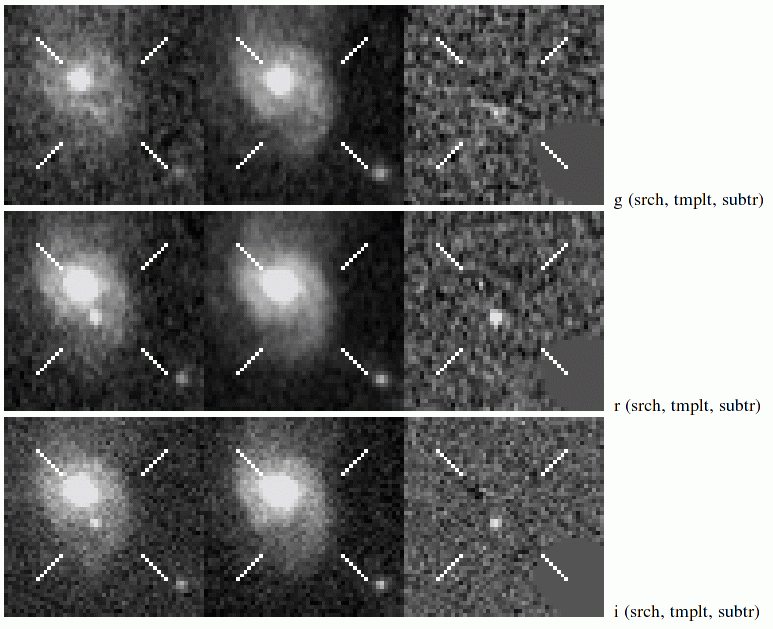
The Scan Master will usually give assignments by sending E-mail messages that look something like this:
The test run of 4203 with the new framesub is ready
to scan, or rather the first template is:
run 4203
template 2583
rerun 17
cc 1 JF
cc 2 BD
cc 3 FD
cc 4 RK
cc 5 MTS
cc 6 JM
This means that scanner "FD" should fill out the hand-scanning initialization page so that the "Search Run" box reads 4203, the "Template Run" box reads 2583, the "ReRun" box reads 17, and the "Camera Column" box reads 3. To begin, leave the "First Object ID" box at its default value of -1 and click on the "ENTER" box.
Your browser should bring up the standing scanning form, which has four frames:
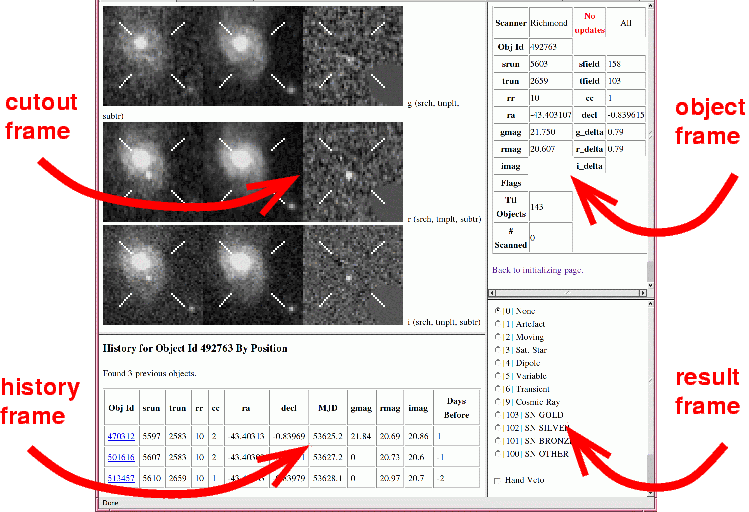
The Cutout Frame shows 9 pictures: from top to bottom, they are the g'-band, r'-band, and i'-band images. The left panel in each row is the (new) search image; the middle panel is the (old) template image; and the right panel is the (new - old) difference between the search and template image. Each cutout covers a region 50 CCD pixels on a side, or about 20 arcseconds by 20 arcseconds. Beware -- the orientation of each cutout is NOT the standard astronomical "North-up and East-left"; moreover, the direction of North and East will change over the course of a single observing run because the SDSS telescope is on an alt-az mount.
The History Frame gives information, if any, on previous candidates which have appeared at the same position in previous scans.
The Candidate Frame shows you detailed information on the candidate: its position on the sky, magnitude in each passband, and so forth. Note that the Right Ascension value may sometimes be expressed in a strange negative format:
ra = -20.25 means RA = 360.0 - 20.25 degrees
= 339.75 degrees
= 22:39:00 HH:MM:SS
The Result Frame is where you make your decision: choose one of the categories
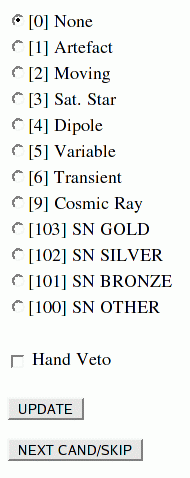
and click on the "UPDATE" button.
The basic idea is for us to glance at little cutouts of frames around each candidate and
Do not be misled by the names of the categories: the sequence from Gold to Silver to Bronze does not correspond to "most likely to least likely to be a SN".
It may help to follow this decision tree:
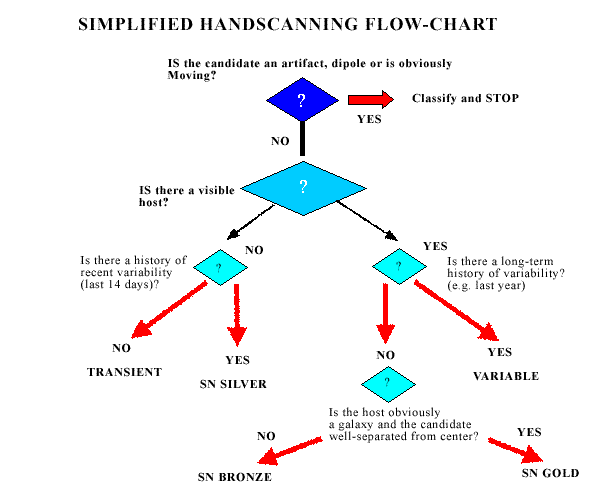
For reference some examples are provided: (as usual, first frame is the search, second is the template, third is the difference).
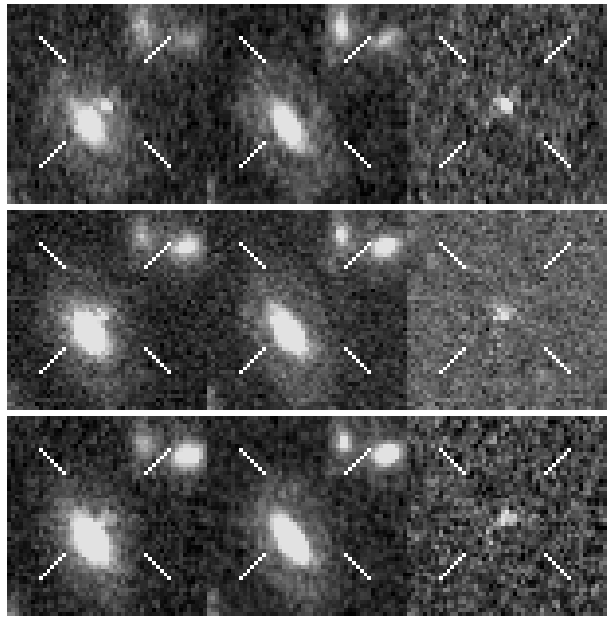
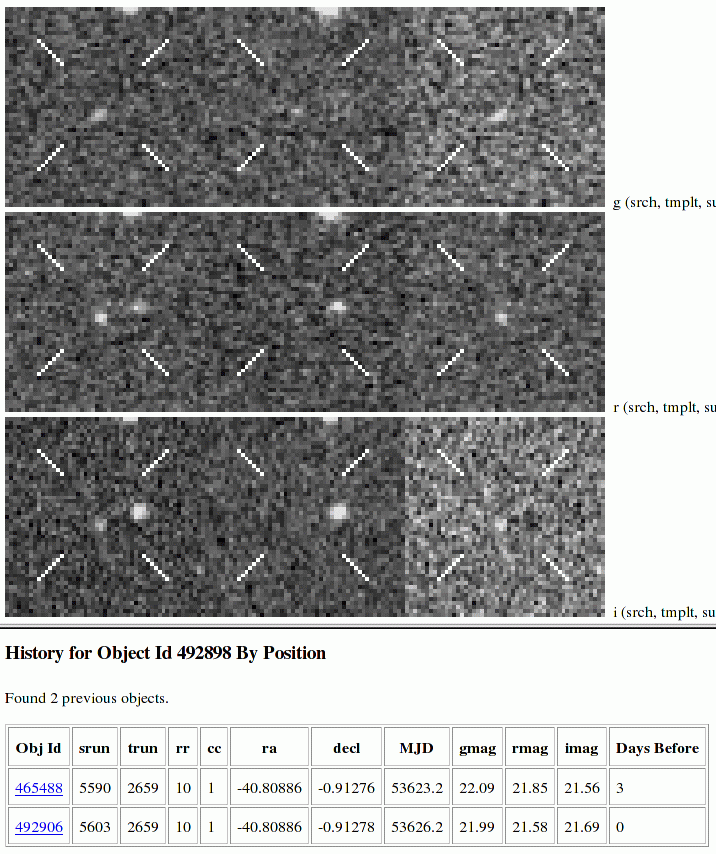
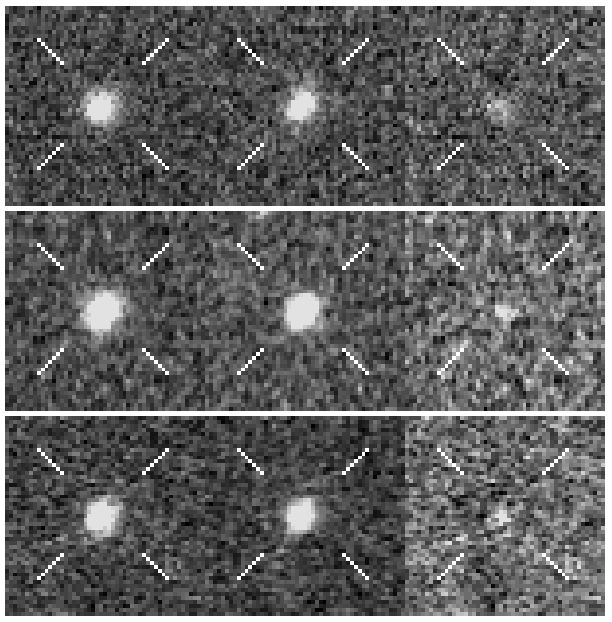
The majority of the candidates, alas, will not be supernovae. Most fall into a very few categories.
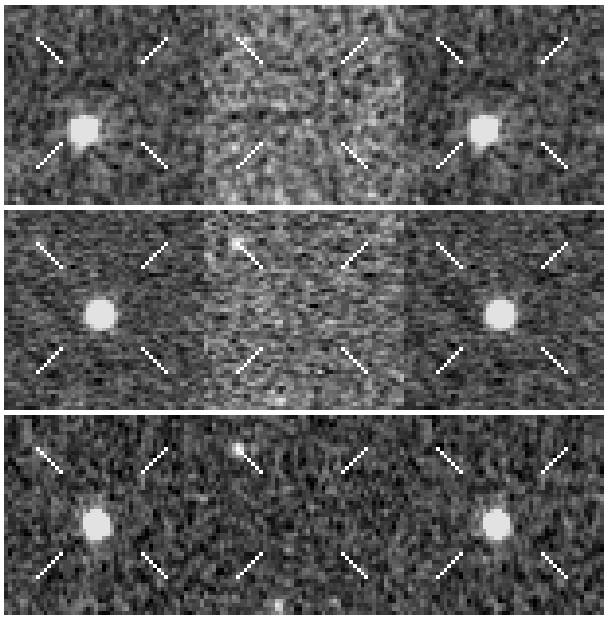
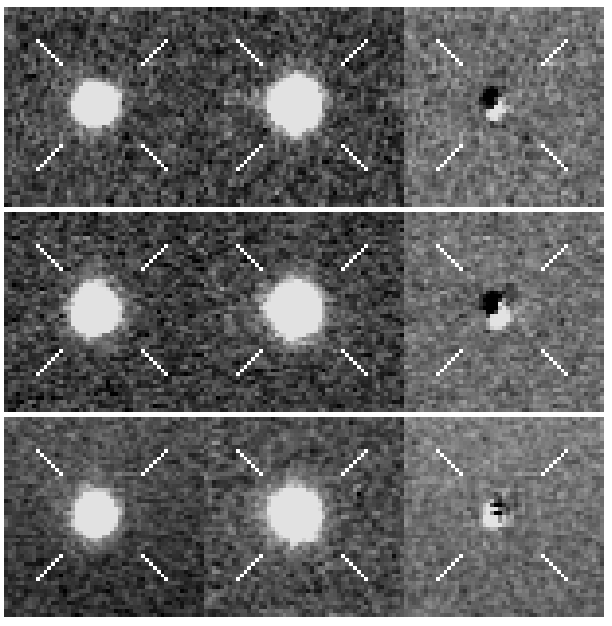
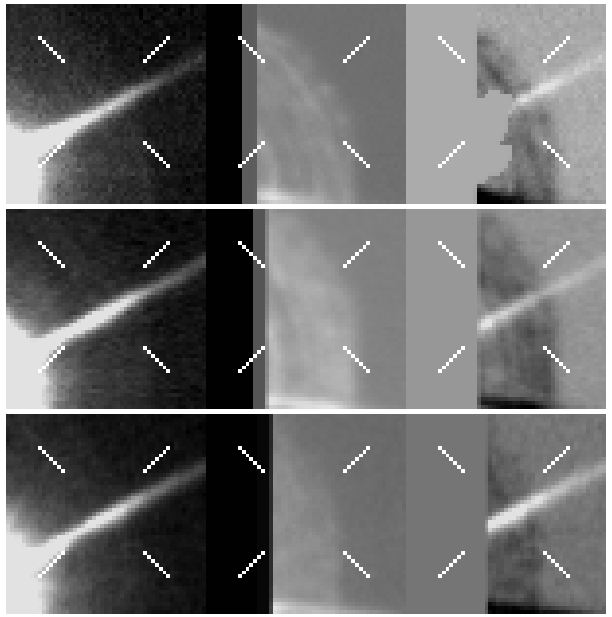
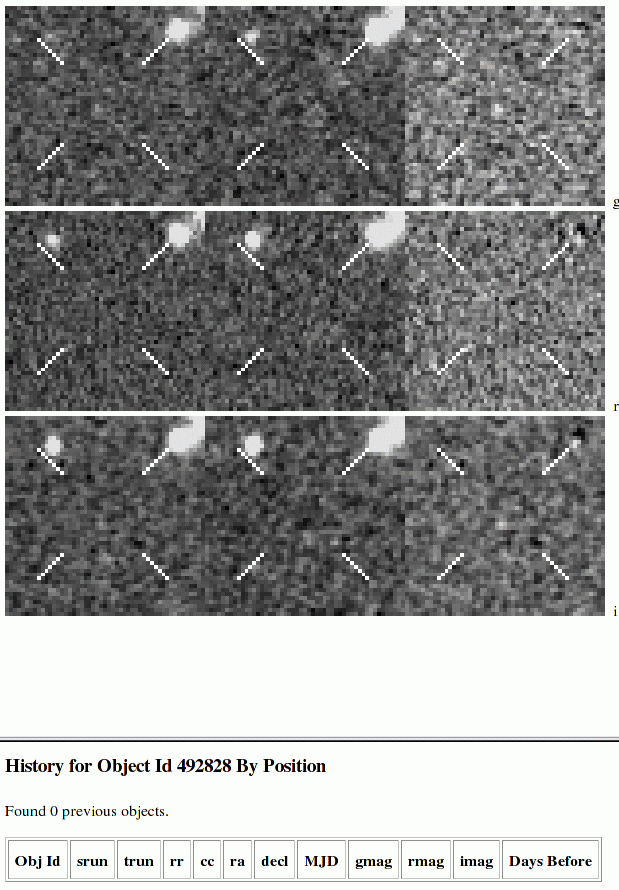
If the object appears again at this same position in a future run, it may be marked "SN Silver", or possibly "Variable", depending on how much time has passed since the original detection.
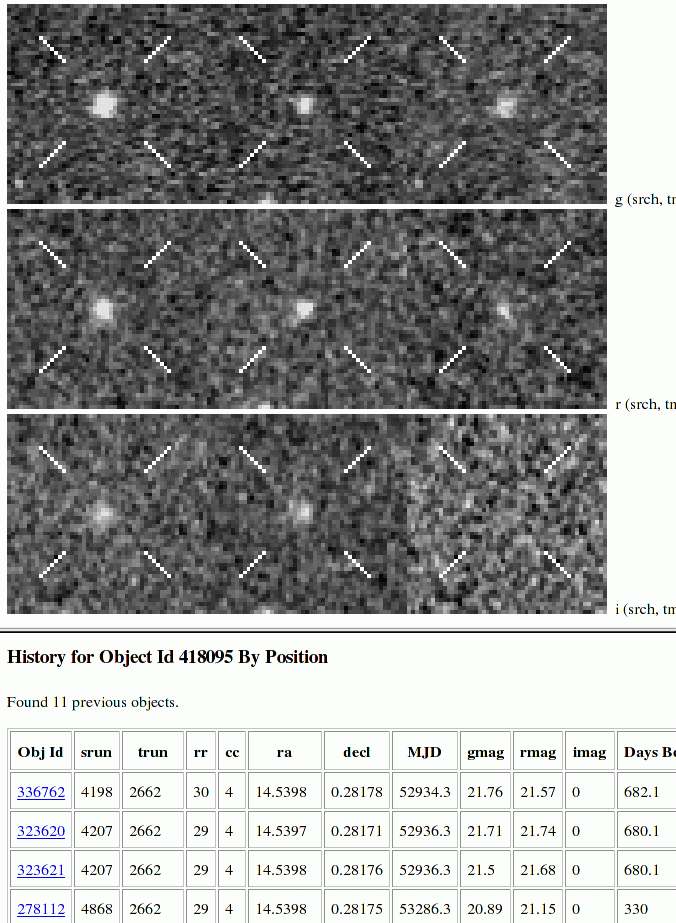

There are a couple of points at which the above classification scheme overlaps causing ambiguity:
After candidates have been scanned by humans, and all the good ones marked as some type of supernova, what then?
-- someone else should fill this in -- I don't know. -- MWR
In the end, a list of the real, confirmed SNe and their properties can be found at the SDSS Supernova Candidates page.